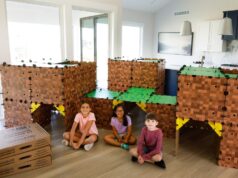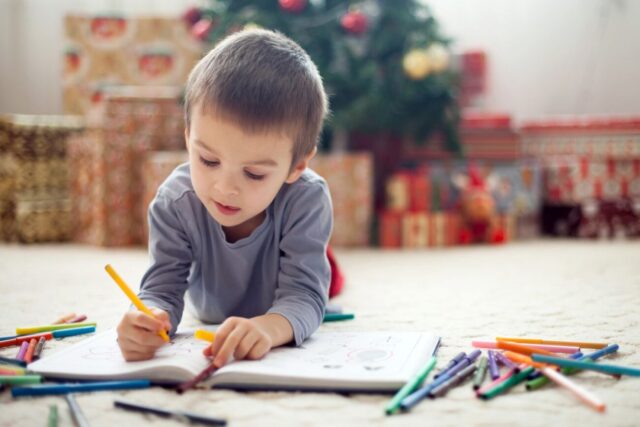
“How do you develop fine motor skills?” — parents often ask this question to education experts.
First, you should give your children enough toys and objects that they can safely play with.
Second, you should explain to them how these items function and what a person can do with them.
Third, you should create an inspiring environment for your kids — for instance, buy them an activity board for toddlers.
What is the Fine Motor Skill and What is It Responsible for?
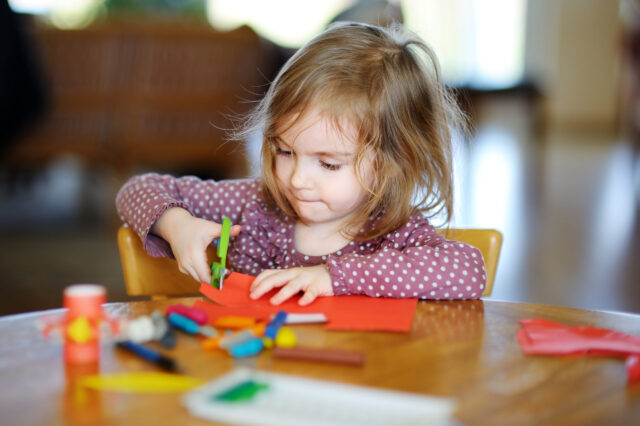
There are two types of motor skills: gross and fine. The former is related to the movements that we make with our limbs, head, and torso. We need such skills to walk, jump, squat, kick a ball, and so on. These gross motor skills help to develop courage and not be clumsy. When a child walks, climbs, and grabs by himself and is not helped by anyone this is his own way to develop properly.
Fine motor skills involve rather sophisticated coordination between our fingers and the nervous system. Parents often ask “What are 5 fine motor skills?”. Yet in fact, there are many more skills of this type.
For instance, self-care fine motor skills involve abilities related to hygiene (such as brushing hair or cleaning teeth), eating (opening food bags, using cutlery), and dressing (zipping and unzipping, buttoning up and undoing buttons).
Academic fine motor skills include, for instance, the ability to cut paper and other materials with scissors. The ability to write, draw, color, and scribble with a pencil also belongs to this category. And again these skills must be developed by a child only. He/she is the only one to exactly know how and when to develop. You, as a parent, may only help him not to damage himself.
But do not forget there are gross motor skills that need to be developed as well.
When kids play, they use fine motor skills to dress dolls and manipulate them, assemble jigsaw puzzles, drive tracks, and so on.
A child who learns to manipulate an iPad stylus or a computer mouse is gaining his or her first IT-related fine motor skills.
The list could go on further and further.
In What Cases Must Be Developed?
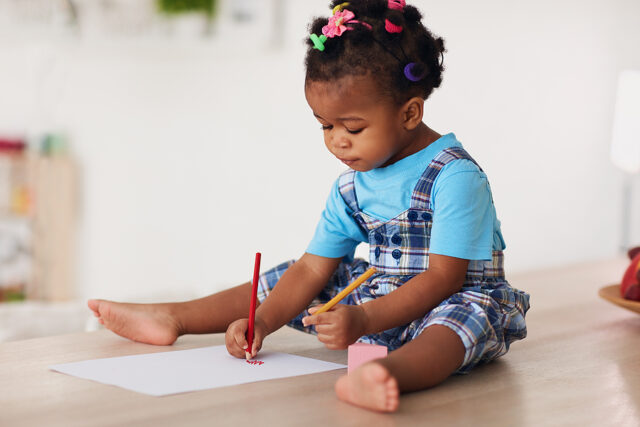
All kids have their instincts to develop, and fine motor skills are one of the first things about toddlers’ health growing up. Our main role, as parents, is to encourage this development, and help kids out, but never set any boundaries between them and become a person in any way.
But you should pay special attention to your kid’s fine motor skills development if your son or daughter meets one of the following criteria.
- Waits for you to dress him or her and clean their teeth rather than trying themselves. But remember, you better tell him/her to do it themselves.
- Is bossy toward other kids and asks them to do something for him or her (“Build a lego tower for me!”).
- Has little interest in scissors and pencil skills. Show them an interesting world of colors and drawings.
- Avoids tasks that require them to sit down and concentrate on certain activities. But bear in mind, this is not critical, kids are active and hard to sit still.
- Prefers to run around and enjoys other types of rather simple physical activities. Which is also ok, when his/her time will come he will learn everything he/she needs to develop and grow.
- When using an iPad, refuses to use a stylus but watches cartoons passively instead.
The essence of all these criteria boils down to the following: the kid is not ready to face challenges. He or she doesn’t even try to put some effort into solving them. Instead, they immediately ask their parents or someone else for help. In this case, you should encourage your son or daughter to improve their fine motor skills.
How to educate and develop a child who prefers to stay passive? The easiest way to do so is to buy them a beautiful, safe, and durable busy board.
What Advantage for a Child Does It Bring?
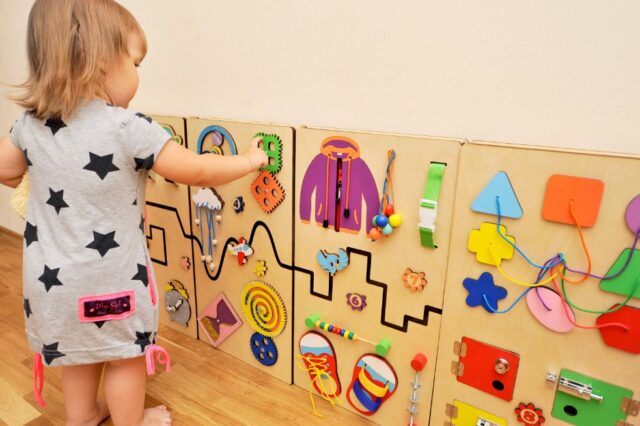
Let’s explain it using an example. Let’s imagine that you have already purchased a busy board for the child. This object is also known as a sensory wall, sensory panel, or busy board. These are the perfect wall decor piece which has a lot of things attached to them: zip closures, buttons, shoelaces, analog clocks, pieces of fabric, and so on. By touching these pieces of Busy Walls and playing with them, kids can enjoy the following benefits of Sensory Walls.
- Remember the names of different objects. Make up multiple games for your kid to play.
- Learn to classify and categorize them.
- Start to freely express their thoughts and emotions. Which is also very special and fun to memorize for you as a parent.
- Get to know how to take care of themselves. This is very much important. When a kid learns and develops such skills by himself this is a good sign. Let him/her do it.
- Feel more comfortable in the surrounding environment. When a kid knows what angles are, what hard floor is, and what height is they will easily get into the shapes, distances, and physics when they are older.
- Invent games and stories, which boosts their creativity and improves logical thinking.
Kids who purposefully hone their motor skills from an early age become curious and proactive. They realize that learning is fun and eagerly consumes new information.
These developing toys are obvious helpers in time-killing situations for parents and are very necessary for a child. You can just be around while the kid is playing. One more obvious feature of the kids’ furniture is that the game is always open-ended. Your little ones will never get bored by playing and exploring new boundaries for themselves. Perhaps, till they get teenagers.
Hopefully, this article came in handy and now you know the answer to the question “Which is a fine motor skill and how to develop it?”!


